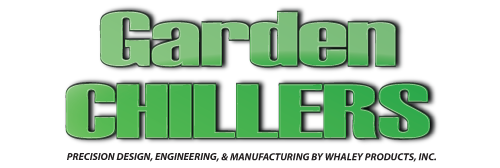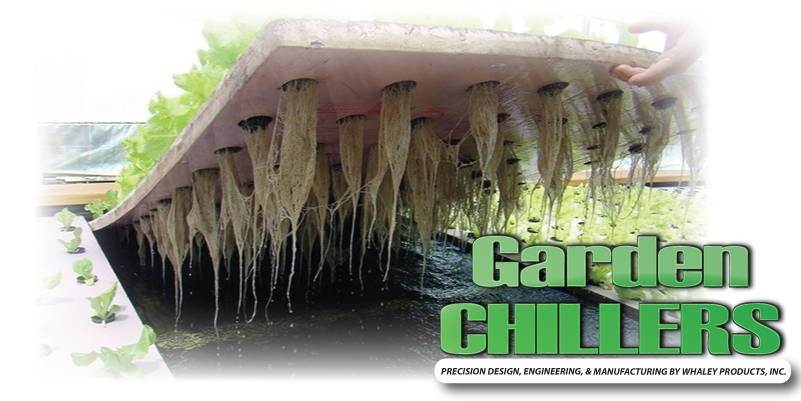Hydroponic gardening is a modern form of gardening. Instead of using soil as the physical support system for the plant roots it used an inert media. Most gardens support their plants root systems with soil which contains nutrients. The roots absorb the nutrients in the soil over time as they absorb water. This is why the soil needs to be replaced regularly to ensure that the proper amounts of nutrients are available to grow healthy plants. Hydroponic plants get all of their nutrients from the water and only use the inert media to keep the roots moist and support them. The nutrients are delivered via a “nutrient solution”. These solutions contain calcium, magnesium, potassium, nitrate, sulfate, and phosphate. They also contain minerals known as micronutrients which include iron, manganese, copper, zinc, boron, chlorine, nickel, and molybdenum. One of the benefits of hydroponic gardening is the ability to directly control and monitor the type and quantities of nutrients plants are exposed to. Most hydroponic gardens are located indoors and get light from artificial grow lights. These lights contain specific light wave length and color spectrums. There are a variety of grow lights available on the market including metal halide, compact fluorescent, halogen, and high pressure sodium systems. There are also hydroponic gardeners that house their systems within greenhouses. The diagram examples below show different types of hydroponic gardening systems.
Water Culture
 Water culture systems are the simplest form of hydroponic gardening. They use a container filled with the nutrient solution and water mixture. At the bottom of this container is an aquarium air stone that connects to an external air pump which supplies oxygen to the water mixture. Plants are placed in containers which float on top of the water. The roots are exposed at the base of the container.
Water culture systems are the simplest form of hydroponic gardening. They use a container filled with the nutrient solution and water mixture. At the bottom of this container is an aquarium air stone that connects to an external air pump which supplies oxygen to the water mixture. Plants are placed in containers which float on top of the water. The roots are exposed at the base of the container.
Drip System
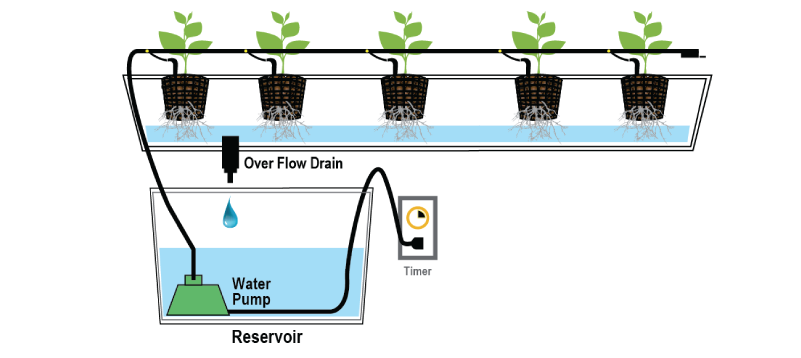 Drip systems utilize two separate containers. The top container is called a “grow tray”. The grow tray houses the plants, inert support media, and drip lines. The second container is located below the grow tray. This container holds the nutrient solution and water mixture as well as an air stone which provides oxygen. The water is pumped up to the grow tray via a nutrient pump and into the drip lines located above each plant.
Drip systems utilize two separate containers. The top container is called a “grow tray”. The grow tray houses the plants, inert support media, and drip lines. The second container is located below the grow tray. This container holds the nutrient solution and water mixture as well as an air stone which provides oxygen. The water is pumped up to the grow tray via a nutrient pump and into the drip lines located above each plant.
Ebb and Flow
 Ebb and flow systems are very similar to drip systems. The difference is that the grow tray is flooded with the nutrient water mixture intermittently. The water is filled in the grow tank to the plant base. When the tank is fill the pump shuts off and the excess water drains back into the nutrient water container and the process repeats. These systems do not require an air stone due to the exposure of air to the roots as the excess water drains away.
Ebb and flow systems are very similar to drip systems. The difference is that the grow tray is flooded with the nutrient water mixture intermittently. The water is filled in the grow tank to the plant base. When the tank is fill the pump shuts off and the excess water drains back into the nutrient water container and the process repeats. These systems do not require an air stone due to the exposure of air to the roots as the excess water drains away.
Nutrient Film
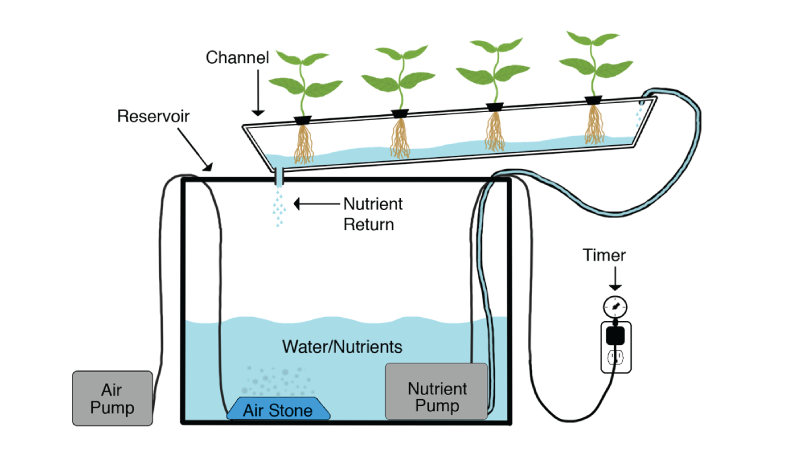 Nutrient film systems are used to supply super oxygenated nutrient mixtures over plant roots. Each plant is suspended in a media basket from a pipe with the roots extending into the grow tray below. The nutrient water mixture, air stone is located in a reservoir below and pumped up into the grow tray via a pump. The roots are continuously provided with the nutrient stream with the excess drained back into the reservoir.
Nutrient film systems are used to supply super oxygenated nutrient mixtures over plant roots. Each plant is suspended in a media basket from a pipe with the roots extending into the grow tray below. The nutrient water mixture, air stone is located in a reservoir below and pumped up into the grow tray via a pump. The roots are continuously provided with the nutrient stream with the excess drained back into the reservoir.
Aeroponics
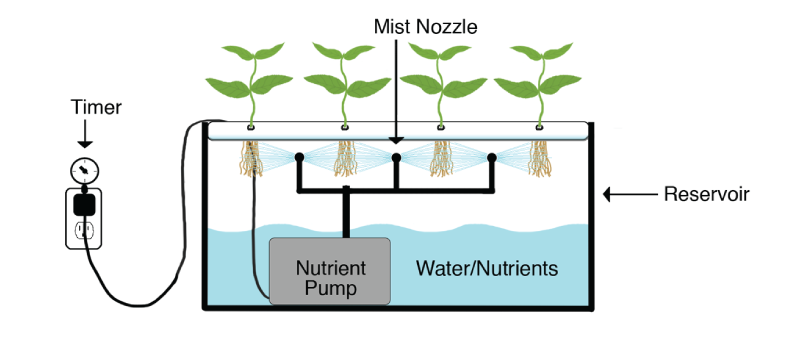 Aeroponic systems are the most complex of the hydroponic gardening methods. The plants are suspended in the same tank as the nutrient solution water mixture. At the bottom of the tank is a nutrient pump that moves the mixture up into a misting system. The misters can work continuously or in a burst pattern. The exposure of the nutrient mixture to the air as it exits the misters provides oxygenation. The excess mixture drips down to the bottom of the tank where it is recycled.
Aeroponic systems are the most complex of the hydroponic gardening methods. The plants are suspended in the same tank as the nutrient solution water mixture. At the bottom of the tank is a nutrient pump that moves the mixture up into a misting system. The misters can work continuously or in a burst pattern. The exposure of the nutrient mixture to the air as it exits the misters provides oxygenation. The excess mixture drips down to the bottom of the tank where it is recycled.
